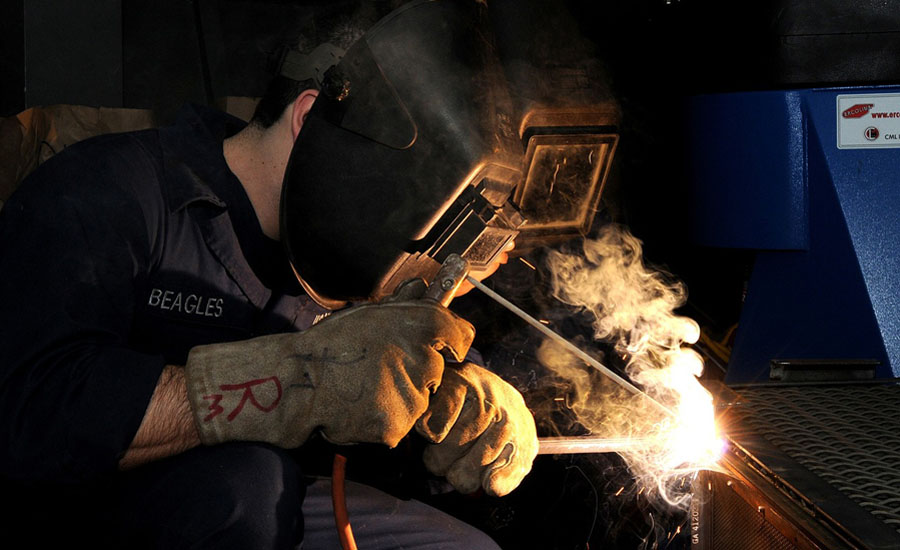Know your welding personal protective equipment (PPE)

Eye and face protection: Proper eye and face protection for welding safety varies depending on the particular task being performed. Helmets, handshield, goggles and safety glasses or combination of these are acceptable protection in various applications. All filter lenses and plates must meet the test for transmission of radiant energy prescribed in ANSI/ISEA Z87.1-2015, American National Standard for Occupational and Educational Personal Eye and Face Protection Devices. According to OSHA 29 CFR 1910.252 (b)(2)(ii)(B), “Helmets and hand shields shall be arranged to protect the face, neck and ears from direct radiant heat from the arc.”
Welding helmets with filter plates are intended to help protect users from arc rays and from weld sparks and spatters that strike directly against the helmet. They are not intended to protect against slag chips, grinding fragments, wire wheel bristles and similar hazards that can ricochet under the helmet. Spectacles, goggles or other appropriate eye protection must also be worn to protect against these impact hazards.
When arc cutting and arc welding with an open arc, OSHA requires operators to use helmets or hand shields with filter lenses and cover plates. Nearby personnel viewing the arc must also be protected. Safety glasses with a shade 2 lens are recommended for general-purpose protection for viewers. When resistance welding or brazing, operators must use face shields, safety glasses or goggles, depending on the particular job, to help protect their faces and eyes from welding hazards.
Protective clothing: According to ANSI Z49.1-2012, Welding and Cutting (4.3), “appropriate protective clothing for any welding or cutting operation will vary with the size, nature and location of the work to be performed. Clothing shall provide sufficient coverage and be made of suitable materials to minimize skin burns caused by sparks, spatter or radiation. Covering all parts of the body is recommended to protect against ultraviolet and infrared ray flash burn.”
Dark clothing works best to reduce reflection under a faceshield. Heavier materials, such as wool clothing, heavy cotton or leather, are preferred as they resist deterioration. Materials that can melt or cause severe burn due to sparks that may lodge in rolled-up sleeves, pockets of clothing or pant cuffs are not suggested.
The ANSI standard requires all welders and cutters to wear protective flame-resistant gloves, such as leather welder’s gloves, which provide the heat resistance needed for welding. A gauntlet cuff offers additional arm protection. Insulated linings should be used to help protect areas exposed to high radiant energy.
Other protective clothing for welding safety may include durable, flame-resistant aprons made of leather or other suitable materials to provide protection to the front of the body when additional protection against sparks and radiant energy is needed.
Source: W.W. Grainger, Inc. www.grainger.com/content/QT-WS-welding-safety-109
Looking for a reprint of this article?
From high-res PDFs to custom plaques, order your copy today!






